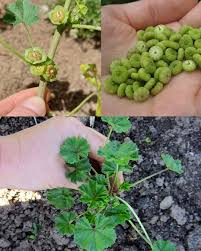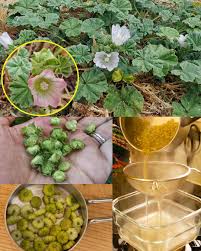Among the myriad plants that have influenced human health and wellness, Malva neglecta (common mallow) and Malva sylvestris (high mallow) stand out. Both members of the Malvaceae family, they have been used for centuries in various cultures for their healing properties. With a deep history rooted in traditional practices and supported by modern research, these plants continue to offer versatile and potent remedies for a wide range of health concerns.
Health Benefits of Malva Neglecta (Common Mallow)
- Digestive Aid: The mucilage in common mallow soothes the digestive system, making it effective in treating conditions like gastritis, irritable bowel syndrome (IBS), and heartburn. A tea made from the leaves and flowers helps protect the digestive lining, providing comfort and promoting healing.
- Respiratory Health: Thanks to its expectorant properties, common mallow aids in alleviating symptoms of respiratory issues like the common cold, bronchitis, and sore throats. The mucilage helps soothe irritated mucous membranes and facilitates mucus expulsion, making breathing easier.
- Anti-inflammatory Effects: The plant’s anti-inflammatory properties help reduce swelling and pain, making it beneficial for conditions like arthritis and muscle aches. A poultice or tea can provide both internal and external relief.
- Immune System Support: Rich in antioxidants, vitamins A and C, and minerals like iron and magnesium, common mallow strengthens the immune system, helping protect the body from infections and oxidative stress.
- Urinary Health: Common mallow has a long history of supporting urinary tract health. It acts as a diuretic, promoting the elimination of toxins and reducing the risk of urinary tract infections.
- Skin Care: Common mallow’s mucilage content also makes it effective in treating skin conditions such as eczema, dermatitis, and wounds. Applied topically, it accelerates healing, reduces irritation, and provides a barrier against infections.
- Culinary Uses: Common mallow’s leaves, stems, and flowers are edible, adding nutritional value to salads, soups, and stews. Rich in vitamins and minerals, it provides a subtle flavor and numerous health benefits.

Health Benefits of Malva Sylvestris (High Mallow)
- Anti-inflammatory Properties: High mallow is well-known for its anti-inflammatory effects, especially beneficial for conditions like sore throats and gastrointestinal irritation. Its flavonoids help reduce inflammation and ease pain.
- Respiratory Relief: Like common mallow, high mallow helps relieve respiratory discomfort by loosening phlegm and easing coughs. Teas and syrups made from the plant are natural remedies for colds, bronchitis, and asthma.
- Wound Healing and Skin Care: High mallow’s mucilage also helps with skin conditions. Topical applications can accelerate wound healing, reduce inflammation in cases of eczema, and provide relief from insect bites and burns.
- Antioxidant Protection: The antioxidants in high mallow help combat oxidative stress and prevent cellular damage, supporting immune function and contributing to overall health.
- Digestive Health: High mallow offers similar benefits to its relative in soothing the digestive system. It helps relieve indigestion, gastritis, and peptic ulcers by calming and protecting the digestive lining.
- Urinary Health: High mallow’s diuretic properties also aid in flushing out toxins and bacteria from the urinary tract, helping to prevent urinary tract infections and kidney stones.
How to Incorporate Malva Neglecta and Malva Sylvestris into Your Wellness Routine
- Teas and Infusions: Both plants can be consumed as teas or infusions. To make tea, steep 1-2 teaspoons of dried leaves or flowers in boiling water for 10-15 minutes. For a more potent infusion, steep fresh or dried leaves in boiling water overnight, then strain the next day.
- Poultices: To soothe skin irritations or promote healing, crush fresh leaves into a pulp and apply them directly to the affected area. This method is especially effective for eczema, minor burns, and insect bites.
- Storage: To preserve the plants, dry them by laying them flat on a rack in a warm, airy space away from sunlight. Once fully dried, store in airtight containers in a cool, dark place to maintain their medicinal properties.
Conclusion
Malva neglecta and Malva sylvestris are botanical treasures, offering a wide range of health benefits backed by both traditional knowledge and modern science. Whether used for their anti-inflammatory properties, digestive support, or skin care benefits, these plants have proven their value across generations. By incorporating them into your wellness routine, you can tap into the rich history of natural healing and enjoy the powerful therapeutic effects they provide. Always consult a healthcare professional before starting any new treatments, particularly if you have existing health concerns or are on medication.
